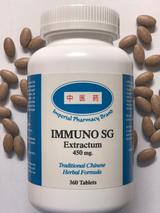Matrine inhibits invasiveness and metastasis of human malignant melanoma cell line A375 in vitro
Matrine and oximatrine are the two alkaloid componets found in sophora roots (an herb used in Traditional Chinese Medicine).
Authors: Liu, Xiao-yan; Fang, Hong; Yang, Zheng-gang; Wang, Xiao-yong; Ruan, Li-ming; Fang, De-ren; Ding, Ying-guo; Wang, Yi-na; Zhang, Yu; Jiang, Xiao-ling; Chen, Hong-chao
Source: International Journal of Dermatology, Volume 47, Number 5, May 2008 , pp. 448-456(9)
Abstract:
Matrine is a traditional Chinese medicine with significant inhibitory activity against malignant tumors. Its effects on the invasiveness and metastasis of malignant tumors have rarely been reported. Aim
To investigate whether matrine can inhibit the metastasis-related activities of the human malignant melanoma cell line A375 in vitro. Methods
3-(4,5-Dimethylthiazol-2-yl)-2,5-diphenyl tetrazolium bromide (MTT) assay and Annexin-V-fluorescein isothiocyanate/propidium iodide (Annexin-V-FITC/PI) affinity assay were used to examine the effects of matrine on the proliferation and apoptosis induction of A375 cells. The morphologic changes of A375 cells were observed by light and electron microscopy. Semiquantitative reverse transcription-polymerase chain reaction (RT-PCR) and Western blotting were performed to evaluate the expression of heparanase mRNA and protein. The effect of matrine on the adhesion ability and invasiveness of treated A375 cells was tested by cell-Matrigel adhesion assay and Matrigel invasion assay, respectively. Results
Matrine showed significant inhibition of the proliferation of A375 cells in a dose- and time-dependent manner. It also induced apoptosis in a dose-dependent manner. Compared with the control group, the levels of heparanase mRNA and protein expression of A375 cells treated with different concentrations of matrine were decreased significantly, as were their adhesion ability and invasiveness. Conclusions
These findings indicate that matrine inhibits the invasiveness and metastasis of A375 cells in vitro. The mechanisms may be linked to the inhibition of cellular proliferation, induction of apoptosis, and downregulation of heparanase mRNA and protein expression.






